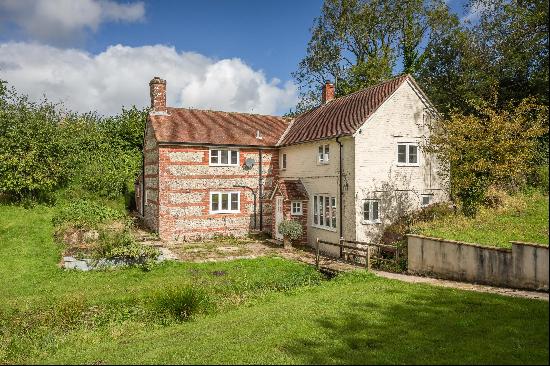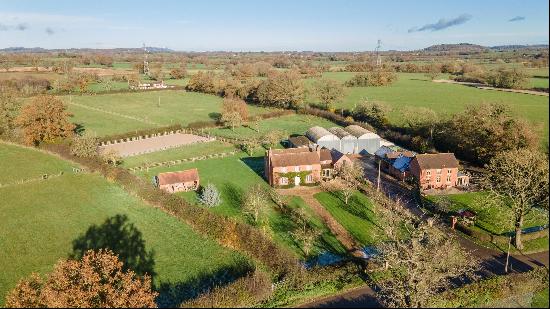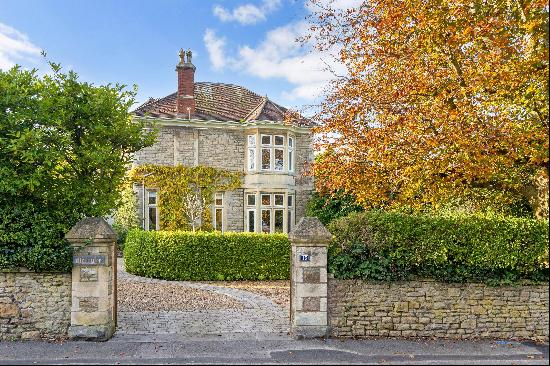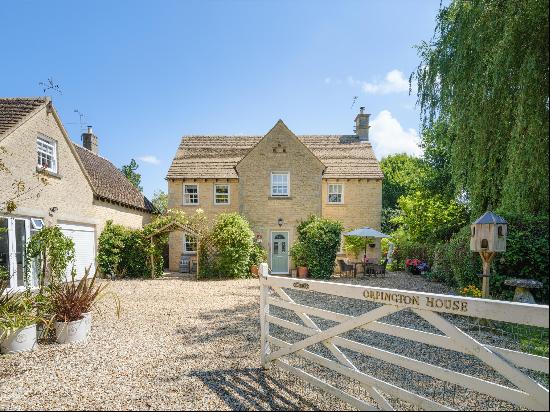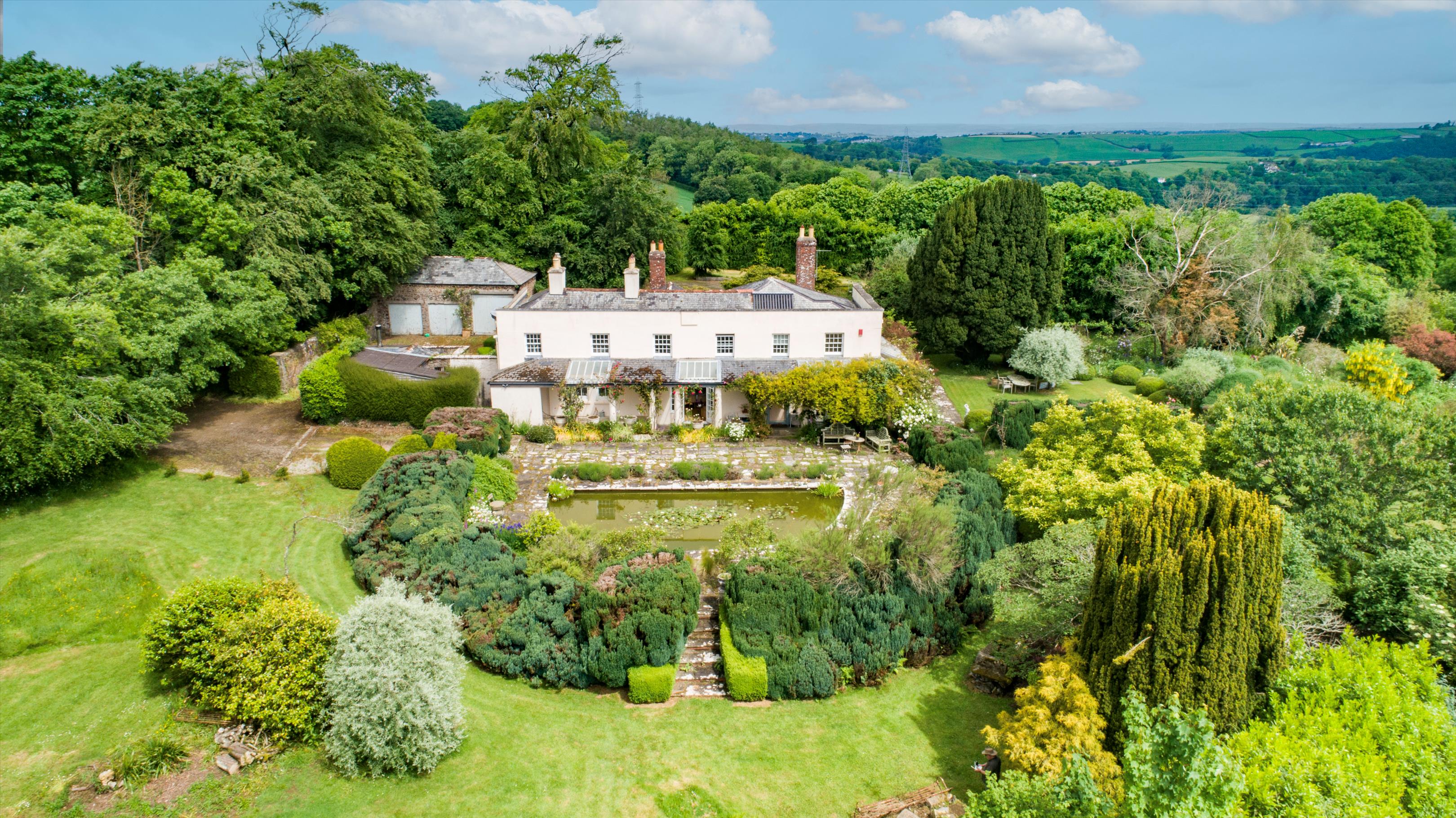

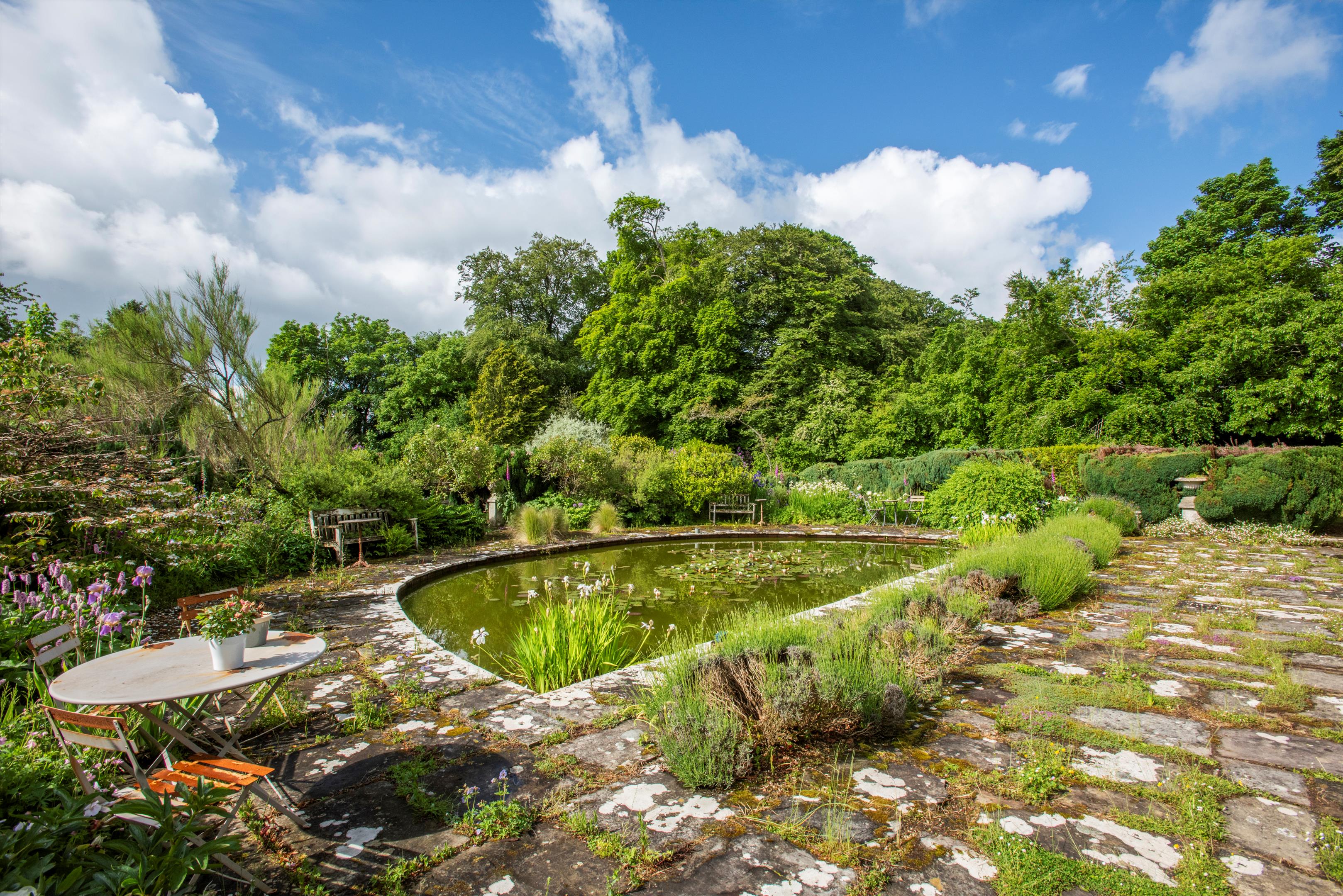


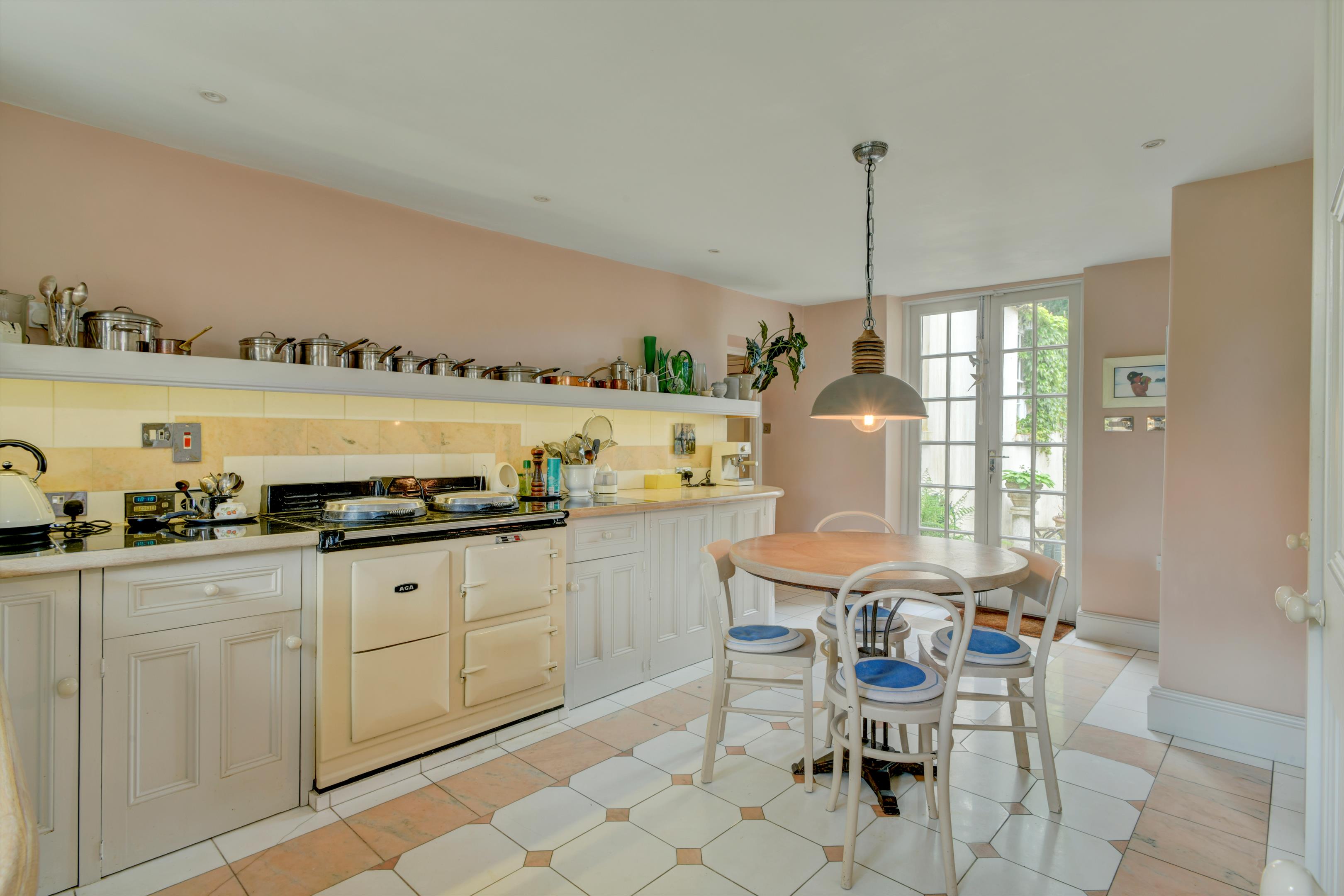
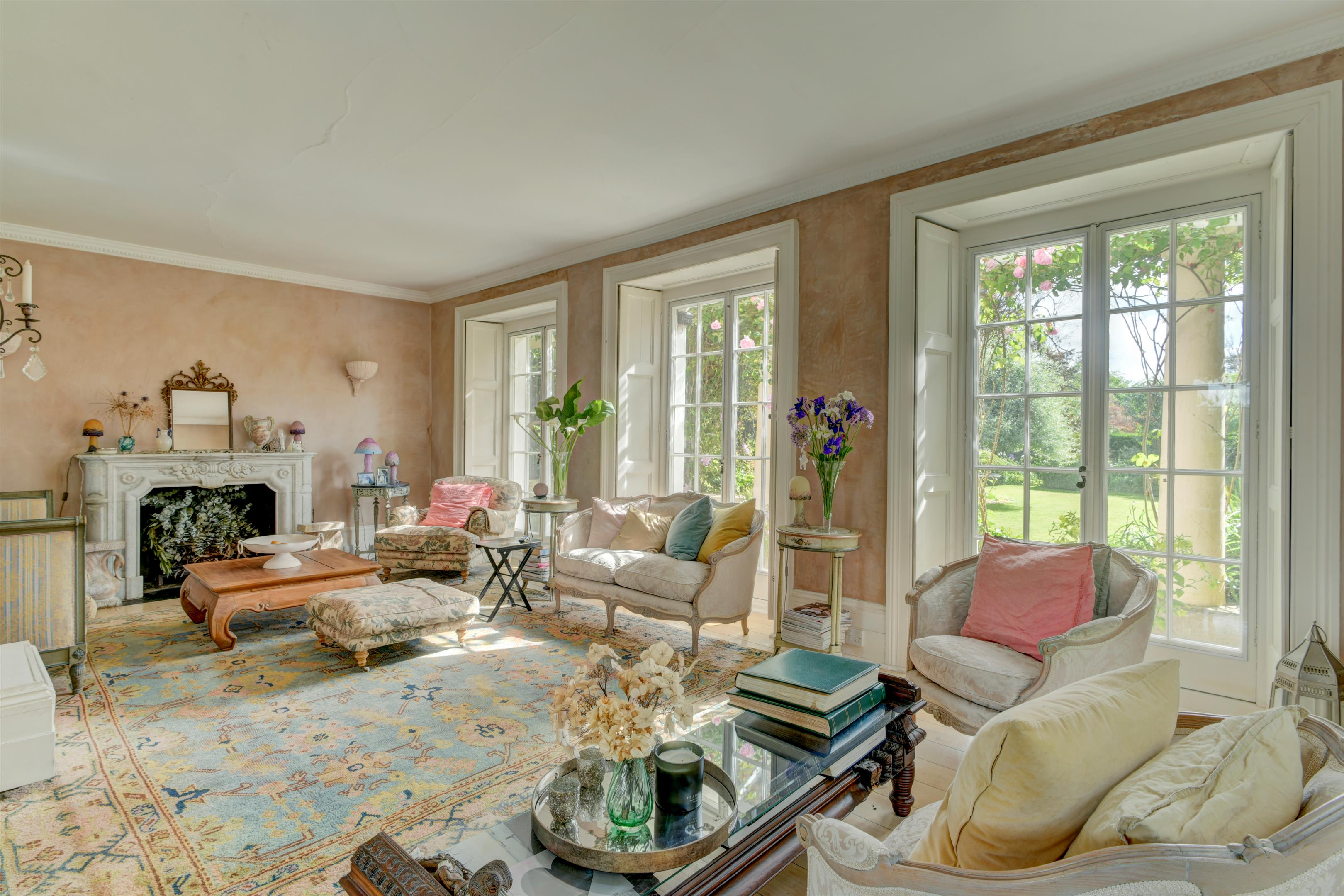

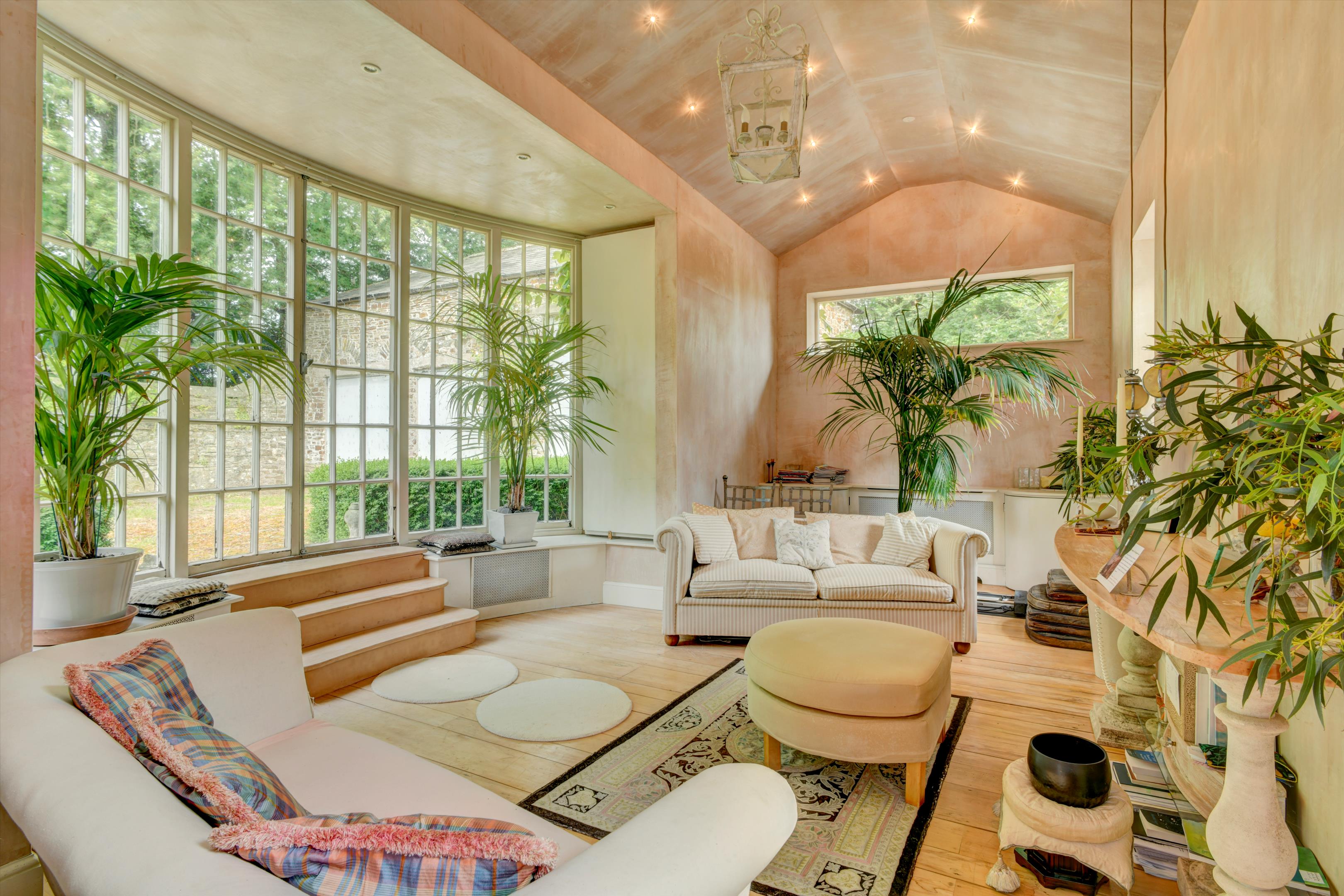
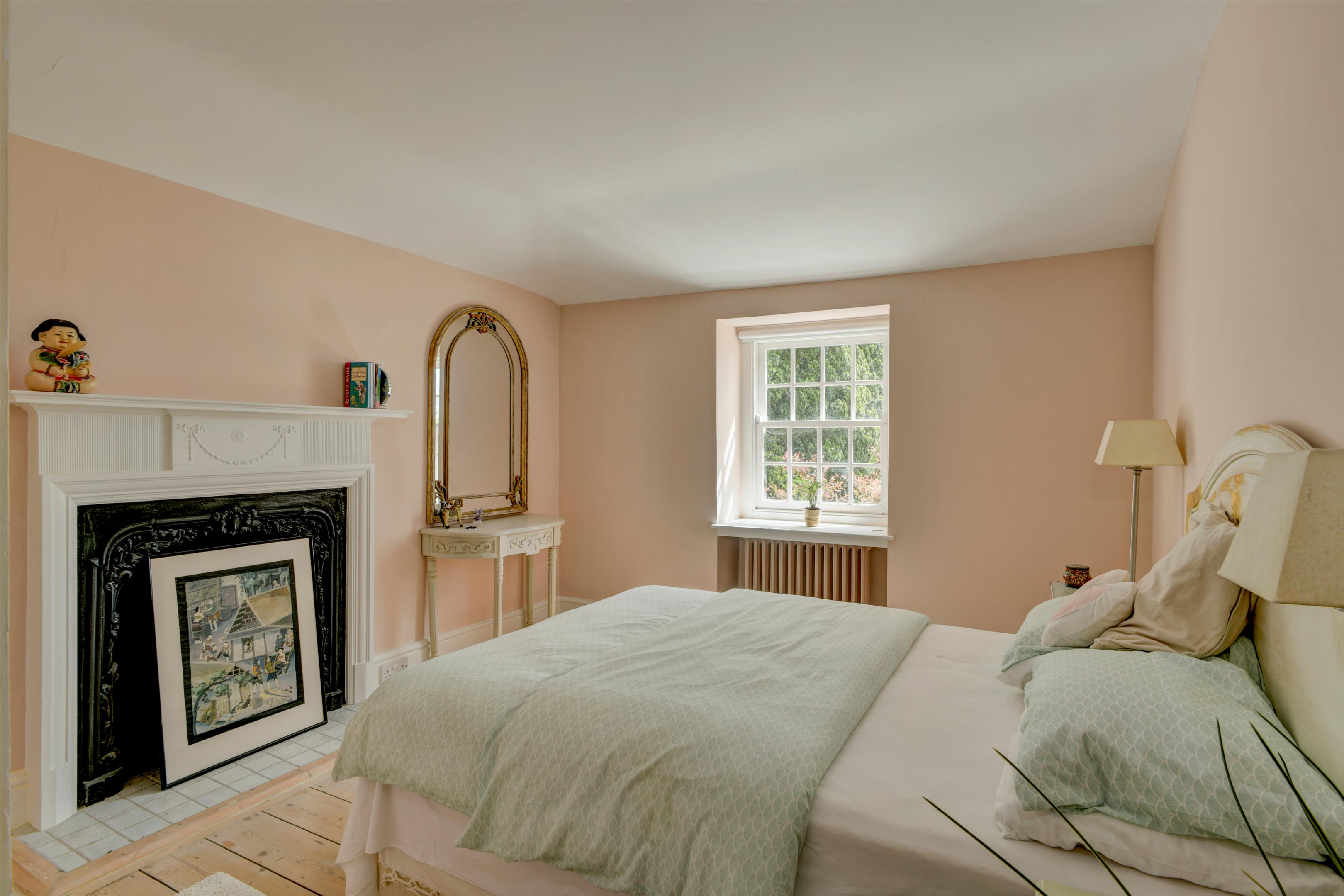

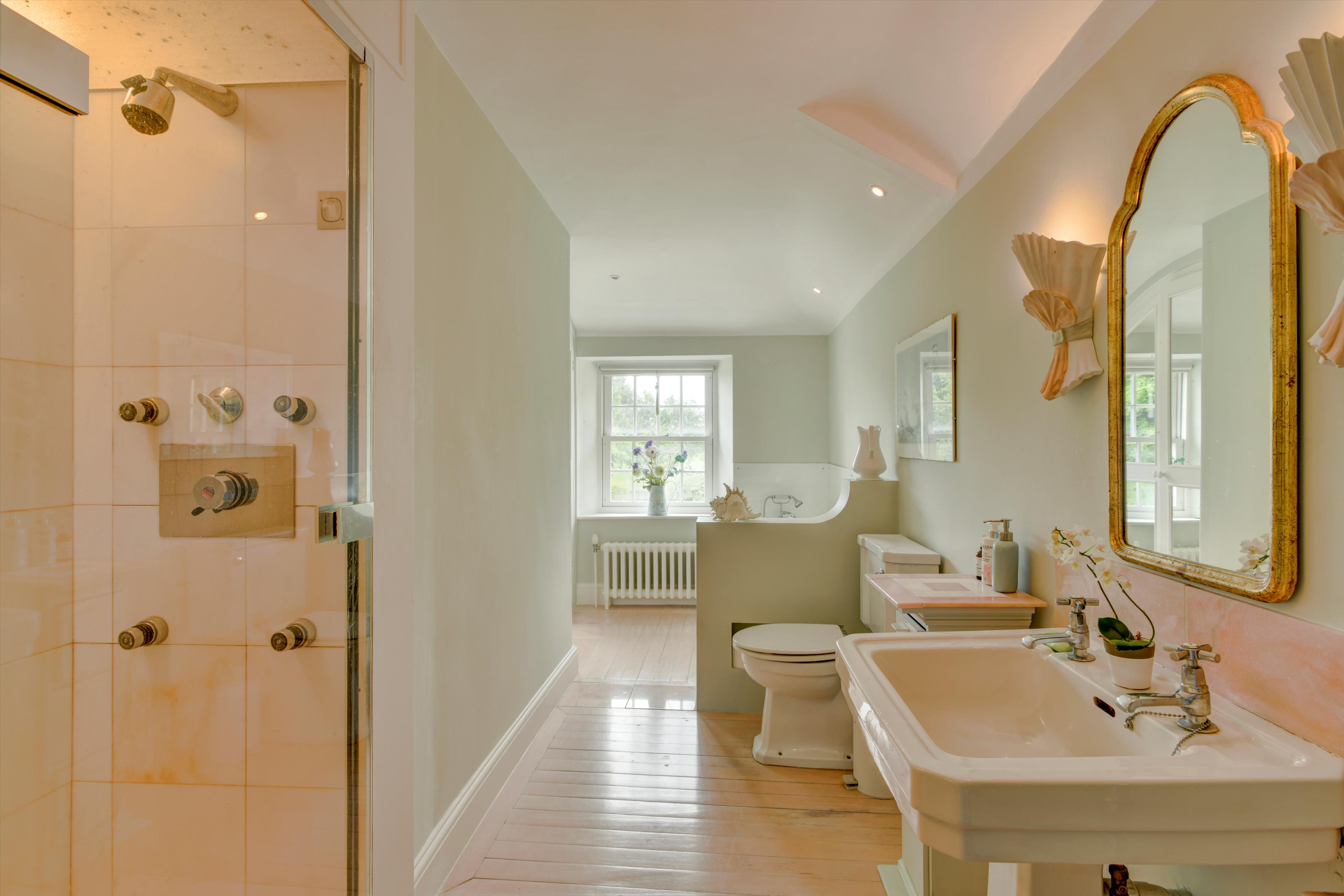
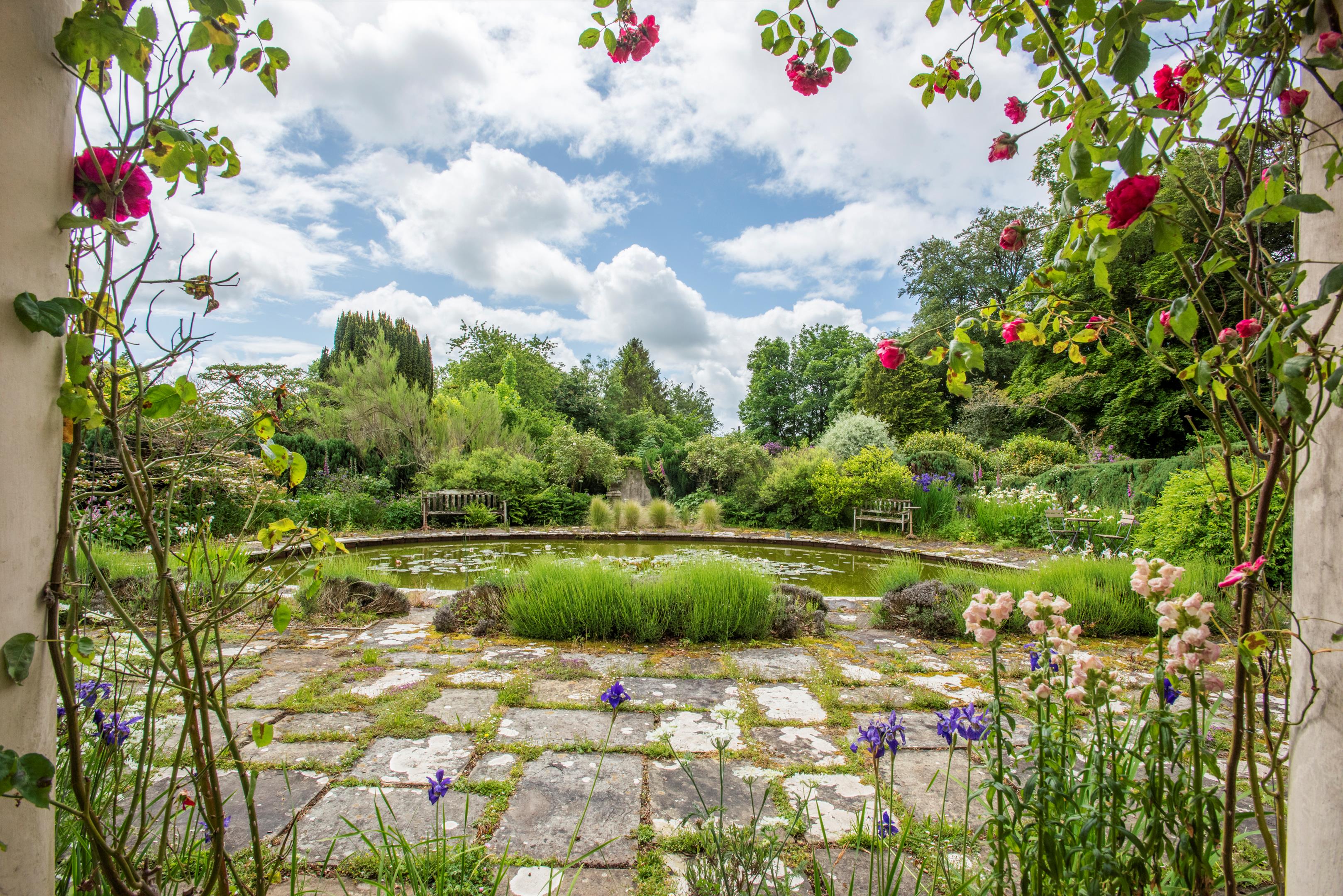
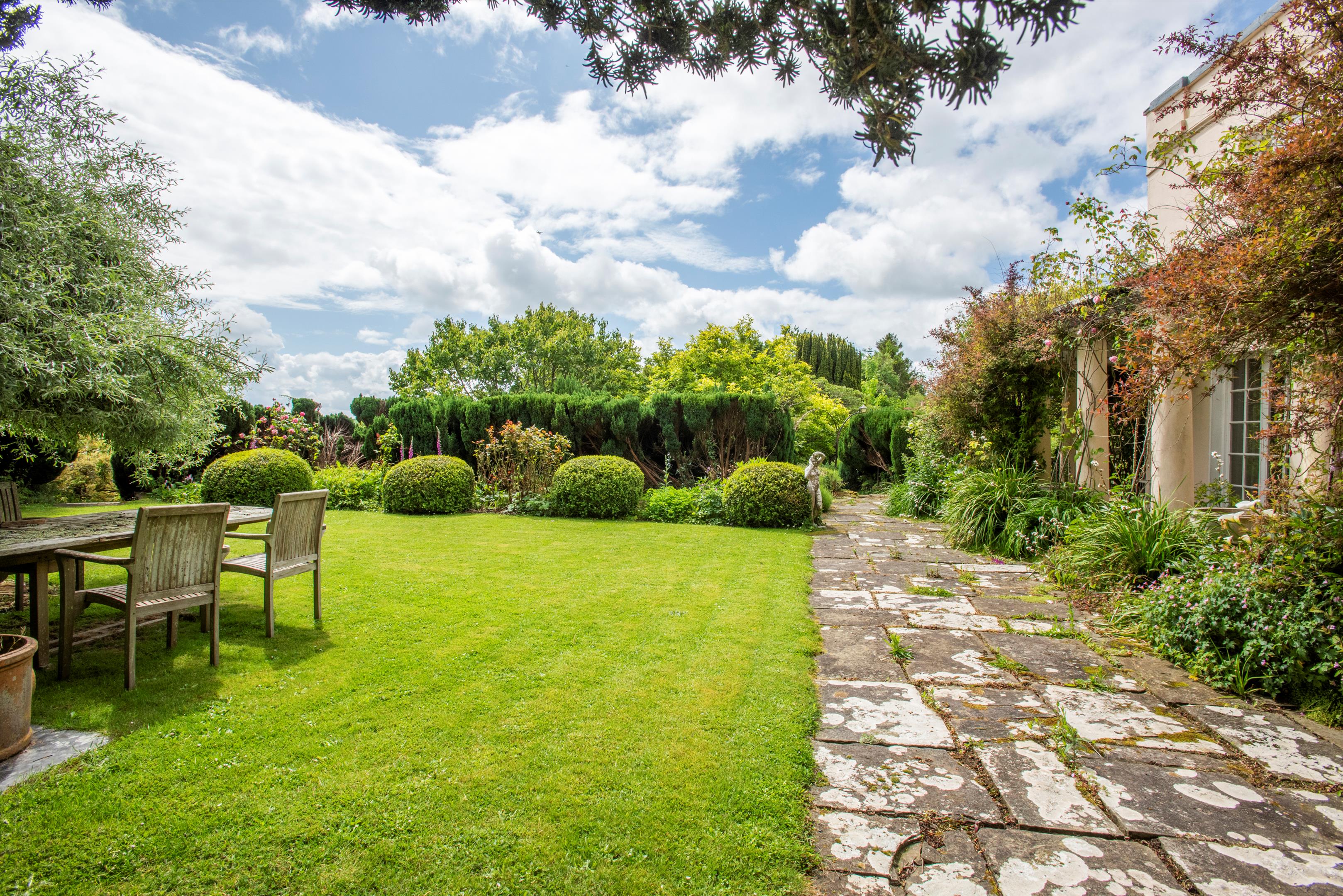
- For Sale
- Offers in excess of 1,650,000 GBP
- Bedroom: 5
- Bathroom: 2
An elegant late-Georgian country house set in over four acres of beautiful, mature gardens and grounds.
Surrounded by just under four acres of breathtaking gardens and grounds, The Dower House is a slice of heaven set in unspoilt countryside that was formerly part of the ancient and historic Annery Estate. The house was commissioned in the early 1800s by the then owner of the estate, William Tardrew, as a home for his mother-in-law. The main house, a large, neo-classical mansion, used to stand a short distance away until it was demolished in 1958 and today just The Dower House and some of the attendant estate buildings remain providing an enchanting setting. It has been the much-loved family home of the current owners for the past 40 years and the house and garden are testament to the care and attention lavished upon them. The house is a beautiful example of a classic, late Georgian country house from arguably the most elegant period of British architecture. Typical features with the design include a stuccoed exterior topped with a parapet concealing its Welsh slate roof and a continuous, partially glazed veranda supported by Doric pillars. It is beautifully presented both inside and out and the interior is equally impressive, with many original architectural fittings including a beautiful front staircase lit by natural light flowing in through a bow window, several gorgeous fireplaces and graceful joinery in abundance.It has four reception rooms on the ground floor with the east-facing drawing room and south-facing dining room positioned either side of the hall with lovely views out over the garden. The kitchen/breakfast room is adjacent to the dining room and south facing with plenty of room for a good-sized kitchen table. It is fitted with handmade, painted timber units, a range built-in electric appliances and a two-oven AGA. At the back of the house is a fabulous garden room with a sunken floor and vaulted ceiling. Upstairs there are five double bedrooms looking out over the grounds to the countryside beyond.OutbuildingsThe Dower House is approached along a nearly 300 yard long drive lined on either side by a belt of mature woodland. The drive ends at a parking area with space for several cars alongside the west-facing side of the house. Beside the parking area is a former coach house that has been adapted to garage three cars. Planning permission was granted to convert the building into ancillary accommodation but this has since lapsed. However, as the previous consent established precedent, there is a reasonable likelihood that consent would be granted in the future if applied for.Behind the house on its northern side is a walled and cobbled courtyard, which has direct access to the kitchen via French windows and serves asa well-sheltered and charming spot for outside lunch or supper parties. Along one side of the courtyard is an outbuilding incorporating four separate stores. A flight of stone steps at one end of the outbuilding leads up to the garden and beneath it is a cold area for keeping food fresh and cool. Gardens and groundsThe gardens and grounds at The Dower House are absolutely magnificent and are a true feature of the property. The formal garden extends around two sides of the house and consist of a series of terraced, lawns fringed by deep, richly stocked borders, all enclosed by a rich variety of broadleaf and evergreen trees that provide complete privacy. Extending the full width of the south-facing side of the house is a deep, paved terrace bounded by a large, half-moon shaped pond with steps on the far side dropping down to the lawn below. Beyond the eastern end of the formal garden is a superb ornamental kitchen garden with shaped beds laid out radially from a central point like the spokes of a wheel. It is overlooked by a 40ft long greenhouse and enclosed partly by a tall wall and partly be a thick tall yew hedge. Within the kitchen garden and dotted around the garden are a variety o
Surrounded by just under four acres of breathtaking gardens and grounds, The Dower House is a slice of heaven set in unspoilt countryside that was formerly part of the ancient and historic Annery Estate. The house was commissioned in the early 1800s by the then owner of the estate, William Tardrew, as a home for his mother-in-law. The main house, a large, neo-classical mansion, used to stand a short distance away until it was demolished in 1958 and today just The Dower House and some of the attendant estate buildings remain providing an enchanting setting. It has been the much-loved family home of the current owners for the past 40 years and the house and garden are testament to the care and attention lavished upon them. The house is a beautiful example of a classic, late Georgian country house from arguably the most elegant period of British architecture. Typical features with the design include a stuccoed exterior topped with a parapet concealing its Welsh slate roof and a continuous, partially glazed veranda supported by Doric pillars. It is beautifully presented both inside and out and the interior is equally impressive, with many original architectural fittings including a beautiful front staircase lit by natural light flowing in through a bow window, several gorgeous fireplaces and graceful joinery in abundance.It has four reception rooms on the ground floor with the east-facing drawing room and south-facing dining room positioned either side of the hall with lovely views out over the garden. The kitchen/breakfast room is adjacent to the dining room and south facing with plenty of room for a good-sized kitchen table. It is fitted with handmade, painted timber units, a range built-in electric appliances and a two-oven AGA. At the back of the house is a fabulous garden room with a sunken floor and vaulted ceiling. Upstairs there are five double bedrooms looking out over the grounds to the countryside beyond.OutbuildingsThe Dower House is approached along a nearly 300 yard long drive lined on either side by a belt of mature woodland. The drive ends at a parking area with space for several cars alongside the west-facing side of the house. Beside the parking area is a former coach house that has been adapted to garage three cars. Planning permission was granted to convert the building into ancillary accommodation but this has since lapsed. However, as the previous consent established precedent, there is a reasonable likelihood that consent would be granted in the future if applied for.Behind the house on its northern side is a walled and cobbled courtyard, which has direct access to the kitchen via French windows and serves asa well-sheltered and charming spot for outside lunch or supper parties. Along one side of the courtyard is an outbuilding incorporating four separate stores. A flight of stone steps at one end of the outbuilding leads up to the garden and beneath it is a cold area for keeping food fresh and cool. Gardens and groundsThe gardens and grounds at The Dower House are absolutely magnificent and are a true feature of the property. The formal garden extends around two sides of the house and consist of a series of terraced, lawns fringed by deep, richly stocked borders, all enclosed by a rich variety of broadleaf and evergreen trees that provide complete privacy. Extending the full width of the south-facing side of the house is a deep, paved terrace bounded by a large, half-moon shaped pond with steps on the far side dropping down to the lawn below. Beyond the eastern end of the formal garden is a superb ornamental kitchen garden with shaped beds laid out radially from a central point like the spokes of a wheel. It is overlooked by a 40ft long greenhouse and enclosed partly by a tall wall and partly be a thick tall yew hedge. Within the kitchen garden and dotted around the garden are a variety o






